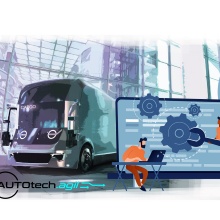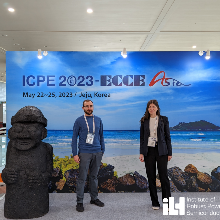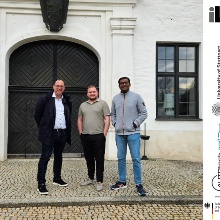Duration
01.10.2022 ̶ 30.09.2025
Project funding
The AUTOtech.agil project is funded by the German Federal Ministry of Education and Research (BMBF) as part of the "MANNHEIM" program (electronics and software development methods for the digitalization of automobility).
Project goals
The goal of the project is to create an open architecture for the mobility system of the future that can be implemented in both disruptive and established vehicle and mobility concepts. Furthermore, the architecture allows a variable distribution of intelligence to electronic systems inside and outside the vehicles, so that not only highly and fully automated vehicles benefit, but all vehicles and every mobile individual. A particular focus is therefore on both the standardization of interfaces and the multiple use, updatability and expandability of functional building blocks with the aim of sustainability.
The project is based on the further development of the architecture for automated vehicles researched in the UNICARagil project. In the framework of the AUTOtech.agil project, the system boundary of the Automotive Service-oriented Software Architecture (ASOA) developed in UNICARagil will be extended beyond the vehicle boundary to enable the realization of complex mobility systems with updatable heterogeneous software components and their coordination for system runtime.
ILH participation
In the AUTOtech.agil project, ILH is developing predictive controllable power electronics based on a digital component twin with an intelligent management system in the powertrain. In the process, state variables on the state-of-health of the power electronics are recorded in real time and provided via the service-oriented software interface, and cloud-based services from a digital component twin are also included. These allow dynamic prediction and sustainable influence of the power electronics subsystem, which is thus optimized for target variables such as lifetime, efficiency, maintenance interval, etc., based on AI algorithms in a hybrid cloud-edge approach. This work is based on the knowledge gained in the SiCeffizient, FA4.0 and LETSCOPE projects.
Associated Partners
Dr. Ing. h.c. F. Porsche AG, Aktion Mensch, Atlatec GmbH, Stadt Aachen, Stadt Ulm, Maxion Wheels Holding GmbH
Partners
DSA Daten und Systemtechnik GmbH, ETAS GmbH, Intel Deutschland GmbH, IPG Automotive GmbH, Mercedes Benz AG, Robert Bosch GmbH, Valeo Schalter und Sensoren GmbH, Vector Informatik GmbH, Vires Simulationstechnologie GmbH, Vitesco Technologies GmbH, ZF Friedrichshafen AG; RWTH Aachen University, TU Braunschweig, TU Darmstadt, Karlsruher Institut für Technologie, TU München, Universität Ulm, Universität Passau, FAU Erlangen-Nürnberg
News
Valentyna Afanasenko
M.Sc.Research Assistant

Swapnil Sunil Roge
M.Sc.Research Assistant

Oleksandr Solomakha
Dr.Research Assistant








